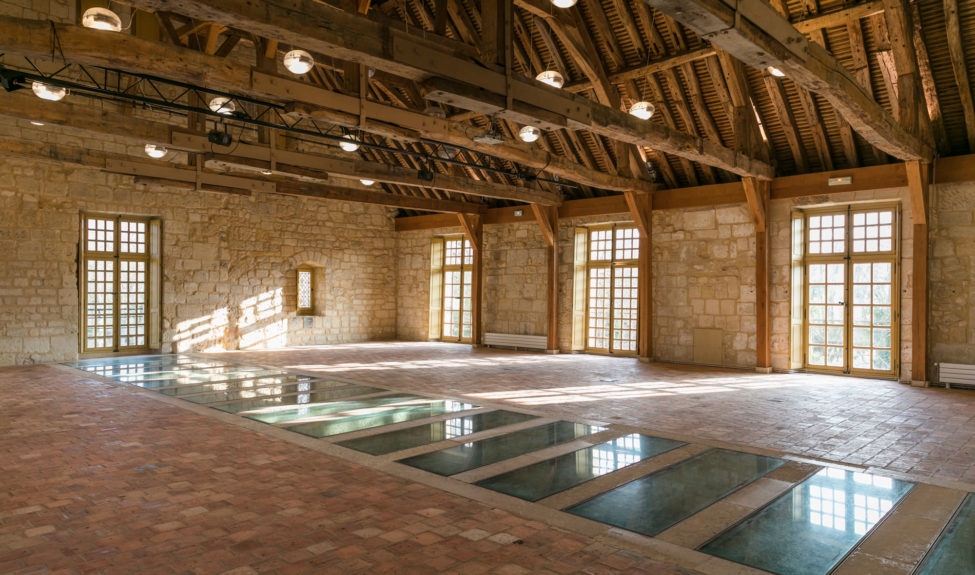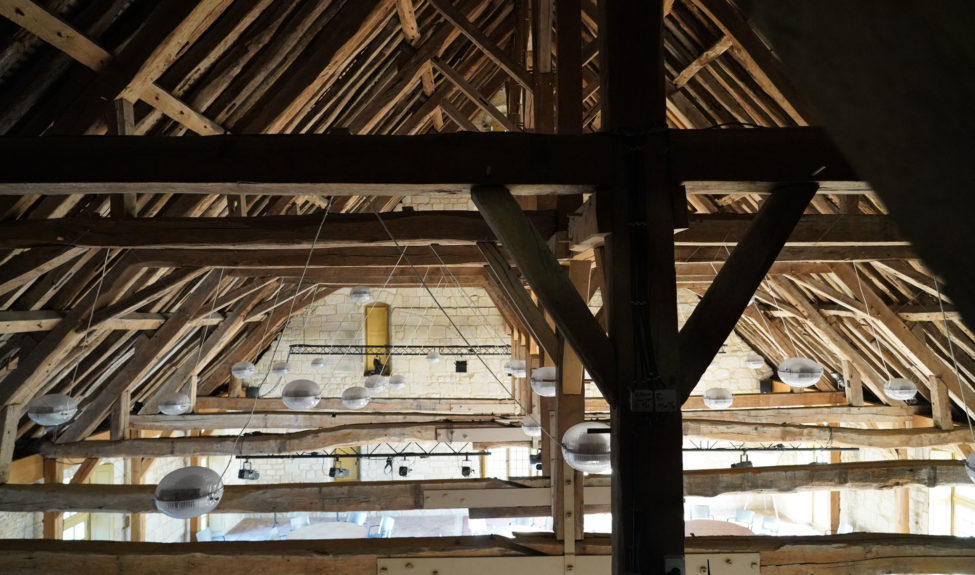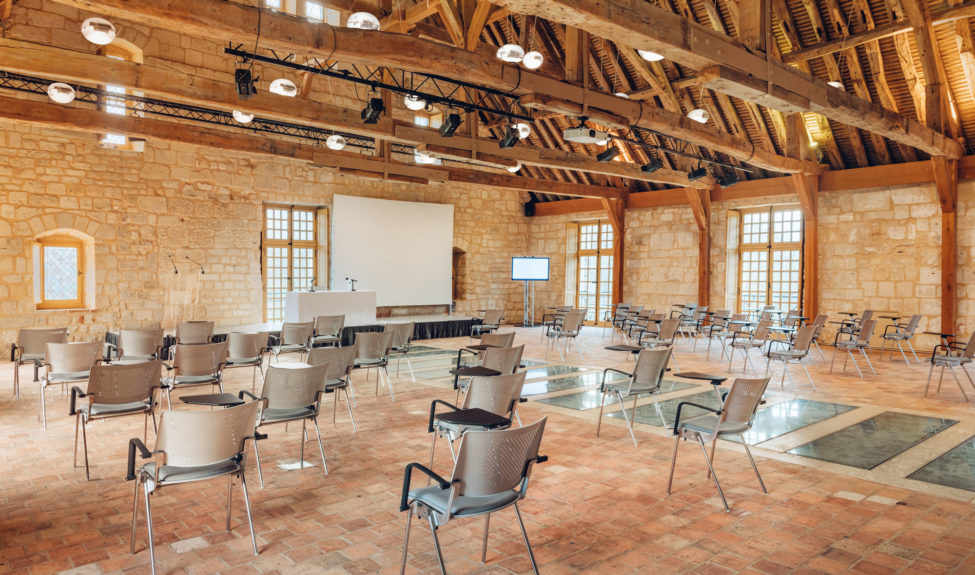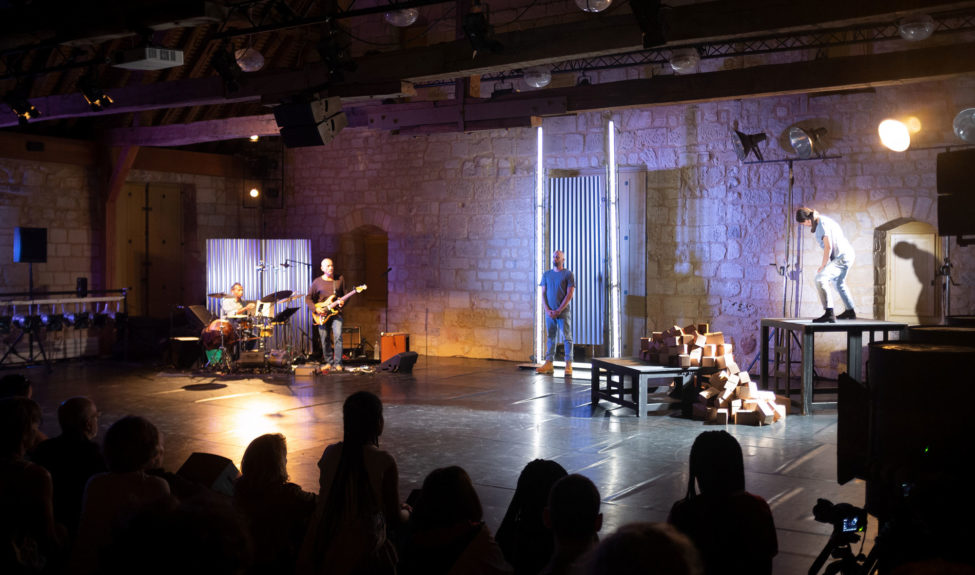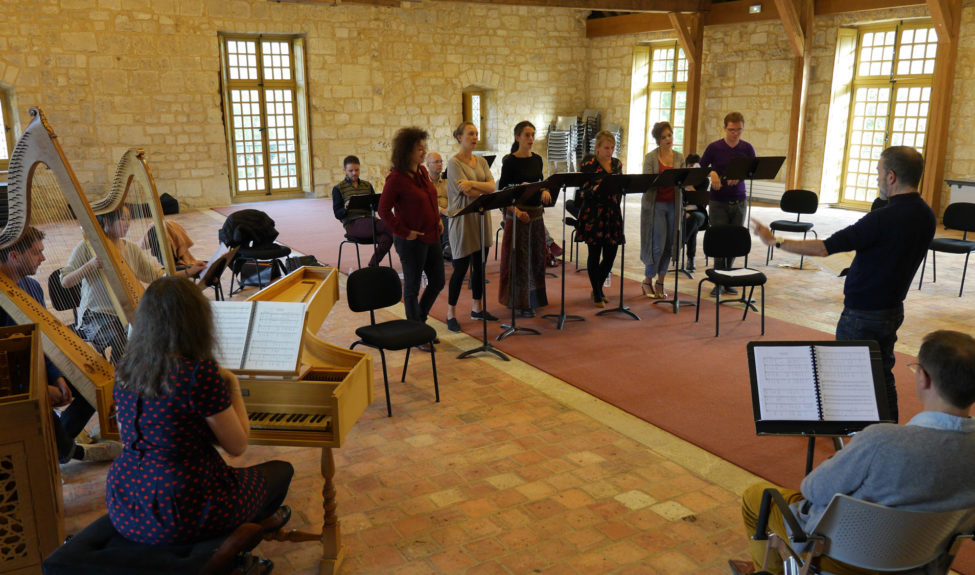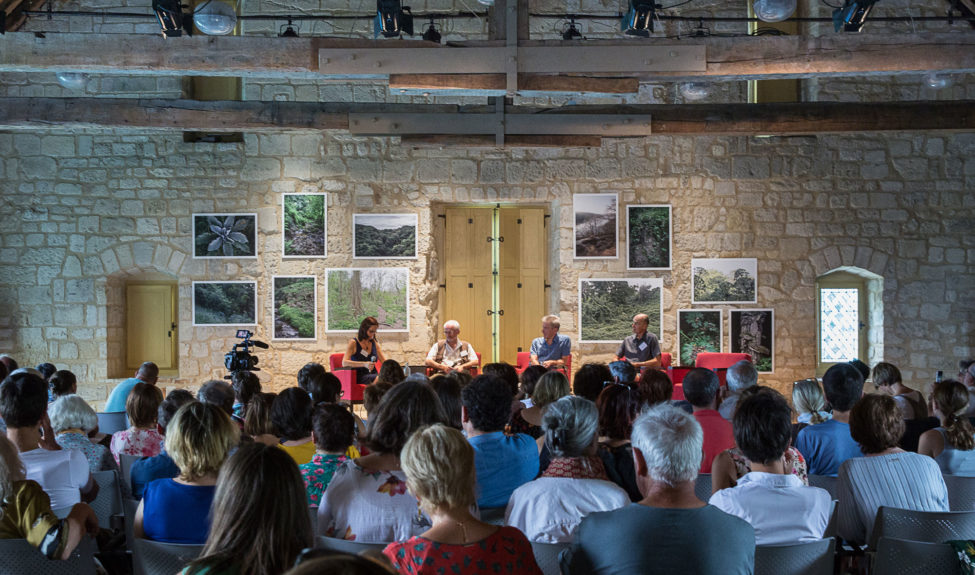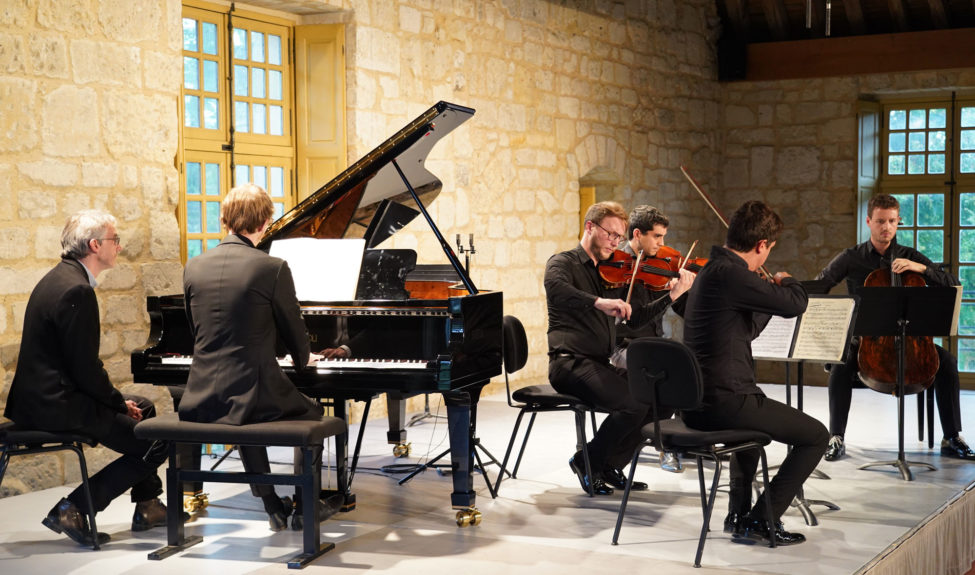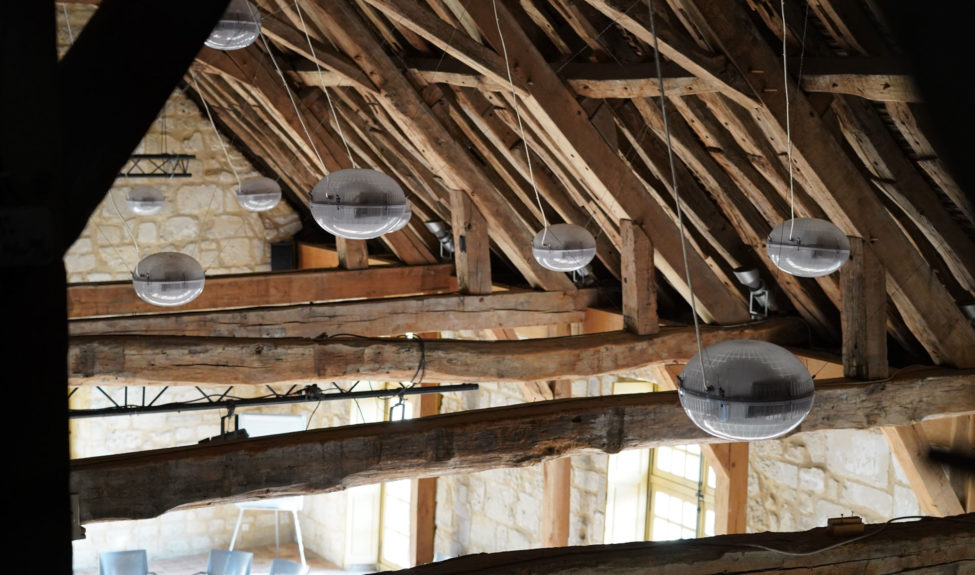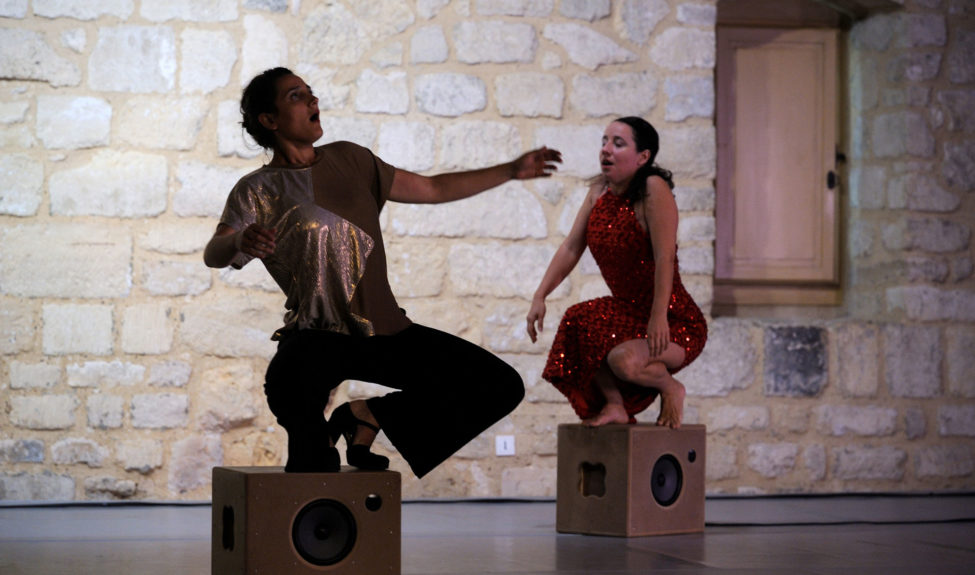The master carpenters who worked in Royaumont in the 13th century provided the abbey with such a strong skeleton that some of the beams put in at the time are still in place. This room, at the very top of the latrines building provides visitors with an opportunity to admire part of the extraordinary beam structures involved. Glass slabs give a view on the canal flowing below.
But visitors normally come up to this vast, column-free space to see musicians and dancers.
en savoir plus
In the Middle Ages the monks’ latrines used to be located here, in this lofty room set above a canal and accessed from the monks’ former dormitory. Restored with care in 1992-1993, the space now hosts performances. The fact that it has no columns – a rare occurrence in this abbey – makes it particularly suited to dance projects as well as to corporate seminars.
Signs still visible on the walls bear witness to the originality and monumental nature of these collective latrines, paired back to back over a canal operating as a sewage collector. Much of the 13th century timber reused in the current frame highlights the equally impressive workmanship of the roofing of this area, with its two contiguous wood-paneled vaults resting on supports built into the latrine seats, in the middle of the room. This highly complex frame was devised to solve the issues linked to building a wooden vault with a span of over 16 meters. Originally the walls displayed a painted décor, with red tracings against a white background imitating stone blocks set in masonry, partly visible to this day on the gable, with stripes underscoring the curve of the paneled vault.
In the 17th century, with the number of monks dwindling, practices and uses of the building’s internal spaces probably changed In 1725 the medieval frame was dismantled and replaced by the one visible today. By then, the collective latrines had likely been superseded by a smaller system and the room, with its enlarged windows, put to residential use.
In the 19thcentury, during the industrial era, the building was basically used first as a laundry, and then as a dyeing workshop. When the nuns acquired the abbey it was in a state of considerable disrepair. Workshops and storage areas were installed, but no repairs were undertaken. Rehabilitation work only started in the 1960s, before total restoration was undertaken in the early 1990s.
